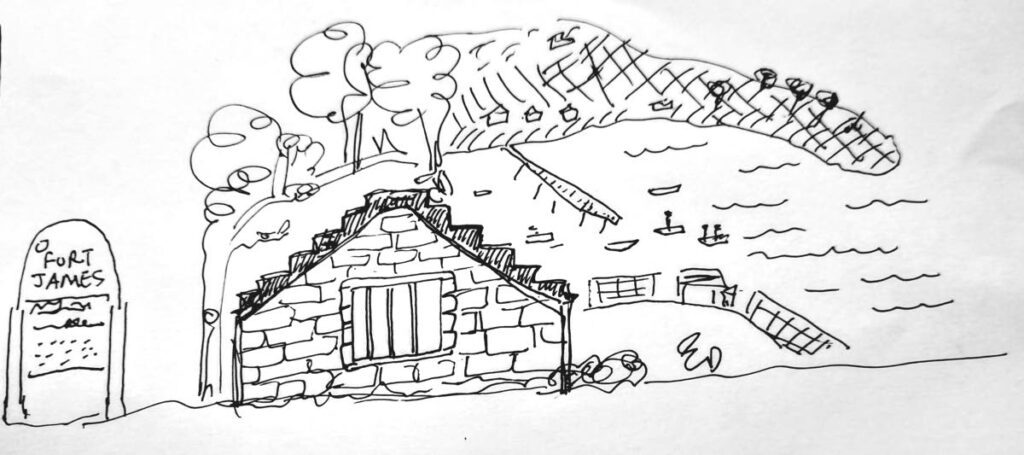A call for fortification

Recently, I received a message from a visitor to Tobago informing me that two dogs were in danger.
On a visit to Fort James in Plymouth that afternoon, she and her companion had seen the dogs trapped on a ledge on the cliff at the side of the fort grounds. The video she sent showed where land had fallen away, resulting in a sudden drop; craggy rocks and the sea lay below. The dogs were not visible in the footage, but a male voice could be heard saying, "I see the brown one."
I received the message at night. Few, if any, would go to help in the dark. I informed a few people, anticipating help in the morning. TEMA and various hiking groups were suggested, since the terrain appeared too dangerous for the average person to navigate. The fire services were also considered.
At the break of dawn, I drove to the fort to see if the dogs were still on the ledge and if help was indeed necessary. A friendly guard, who had just arrived to begin his shift, led me to the edge of the property where the dogs had been sighted. I had immediate respect for the perilous location.
The yellow caution tape stretched at points around the perimeter fluttered helplessly in the wind. The fencing, generally leaning, fallen, rusted, or missing in parts, offered little to no protection.
I was shocked at the condition of the grounds and the danger posed to humans and animals. One misstep...and that would be it. A child, playing "aeroplane" or running excitedly to get a closer view of the ocean, while adults chatted, limed or focused on their phones for even a second, could fall over the cliff.
Because of the dry season, large cracks created a mosaic pattern in the parched earth. It was easy to see how, over time, the land had fallen away – not just from the continuous undercutting by the waves and resulting erosion, but from landslides during the rainy season.

A cracked, faded concrete bench on the edge of the cliff, beyond the leaning fence, offered no invitation to me, with my fear of heights. Sitting there would evoke the feeling of being suspended in the sky – so close was it to the edge.
However, there was a time when that was not "the edge." It was clear how rapidly the land had receded in what must have been a matter of a few years. Former fence-post holes are visible at the edge. As I was informed, the fence is often moved back, to keep in pace with the receding land. In the near distance, the long stretch of jetty continued the vision of dilapidation.
An article on the Tobago House of Assembly website, dated October 10, 2012, states of this jetty: "The jetty will soon be demolished on the grounds of public safety.”
In a live video (hashtagged #LehWeFixDis) filmed nine years later, Watson Duke, founder/political leader of the PDP, is on site to “highlight the plight of the fishermen.” He asks how (given the deplorable state of the jetty) the fishermen access their boats.
“Swim!” one man shouts. “Like how you went Trinidad.”
They all laugh. However, such prolonged dilapidation is no laughing matter.
Back to the fort...What do people do when they visit Fort James? What is there to see and experience at this tourism landmark?
On my visit it was land erosion, fading signage, one or more village dogs, and the quaint stone powder-magazine building, which is currently locked up, used for storing THA tools.
That building, a piece of history, would be more appealing as a charming, antiquated museum. Let visitors walk inside, feel the energy of the past, learn something new from a display of old photographs, illustrations and artefacts. A toolshed can easily be constructed elsewhere.
Also home to the Mystery Tombstone of Betty Stiven, the village of Plymouth is a prime tourism location crying out for urgent attention...just as the dogs were, on the rocky ledge.
By the way, the dogs were not there when I visited. The guard said they had most likely found their way down to the shoreline and gone home for dinner by clambering up the bush-lined pathway used by people who go to fish from the rocks.

Comments
"A call for fortification"